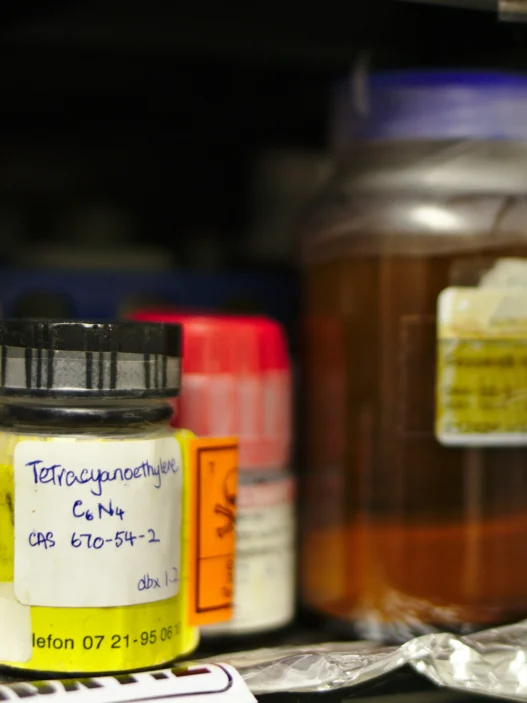Benzenesulfinic acid is a compound of significance in everyday life due to its versatile range of industrial applications. It is utilized in the production of dyes, pharmaceuticals, and agrochemicals, as well as in the synthesis of various organic compounds. Additionally, it is employed as a reducing agent and a stabilizer in certain chemical processes. Its presence in the manufacturing sector underscores its importance as a key component in the creation of numerous consumer products utilized in daily life.
Table of Contents:
- 💡 Commercial Applications
- ⚗️ Chemical & Physical Properties
- 🏭 Production & Procurement
- ⚠️ Safety Considerations
- 🔬 Potential Research Directions
- 🧪 Related Compounds
💡 Commercial Applications
Benzenesulfinic acid, also known as sulfinic acid, is primarily used in the commercial and industrial sectors as a reducing agent in chemical reactions. Its ability to undergo oxidation-reduction reactions makes it valuable in various industries, such as the production of dyes, pigments, and pharmaceuticals.
Moreover, Benzenesulfinic acid is utilized as a key intermediate in the synthesis of drugs and medications. It serves as a precursor for the preparation of various pharmaceutical compounds, including anti-inflammatory and anti-cancer agents. Its versatility and reactivity in organic chemistry make it a crucial component in the pharmaceutical industry.
Overall, the significance of Benzenesulfinic acid lies in its wide range of applications, both in commercial and industrial settings, as well as in drug development and production. Its unique properties and reactivity make it a valuable compound for various chemical processes and applications.
⚗️ Chemical & Physical Properties
Benzenesulfinic acid appears as a white crystalline solid with a slight odor. It is a relatively soluble compound that is commonly used in the synthesis of pharmaceuticals and dyes.
The molar mass of Benzenesulfinic acid is approximately 154.17 g/mol, with a density of about 1.35 g/cm³. This puts it in the same range as common household items like glucose and sodium chloride in terms of molar mass and density.
Benzenesulfinic acid has a melting point of around 92-94°C and a boiling point of approximately 275-280°C. These values are higher than those of many common household items, such as water and ethanol, which have lower melting and boiling points.
Benzenesulfinic acid is sparingly soluble in water and has a relatively low viscosity. Compared to common household items like salt and sugar, which dissolve easily in water, Benzenesulfinic acid exhibits lower solubility. Its viscosity is similar to that of other organic compounds used in pharmaceutical and chemical industries.
🏭 Production & Procurement
Benzenesulfinic acid, also known as phenyl sulfinic acid, is typically produced through the oxidation of thiophenols or thioanisole with hydrogen peroxide. This reaction yields Benzenesulfinic acid as a byproduct.
In terms of procurement and transportation, Benzenesulfinic acid is commonly available for purchase from chemical suppliers in both liquid and solid form. The compound can be shipped in sealed containers to prevent leakage and minimize the risk of exposure.
Due to the potential hazards associated with Benzenesulfinic acid, proper handling and storage measures must be adhered to during transportation. It is recommended to store this chemical in a cool, dry place away from sources of heat or ignition. Workers handling Benzenesulfinic acid should wear appropriate personal protective equipment to minimize the risk of exposure.
⚠️ Safety Considerations
Safety considerations for Benzenesulfinic acid include its corrosive nature, which can cause severe skin and eye irritation upon contact. It is important to handle this compound with caution and use appropriate personal protective equipment such as gloves, goggles, and lab coat. It is also crucial to work with Benzenesulfinic acid in a well-ventilated area to prevent inhalation of its vapors, which can irritate the respiratory system.
Pharmacologically, Benzenesulfinic acid is not commonly used in medicine but is sometimes utilized in organic synthesis as a reagent for the formation of sulfoxides. Its main function is as a precursor to other sulfur-containing compounds, and it is not typically administered to humans or animals for therapeutic purposes. The compound is mainly handled in laboratory settings for research and development purposes.
Hazard statements for Benzenesulfinic acid include “Causes skin irritation” and “Causes serious eye damage.” These statements highlight the corrosive nature of the compound and emphasize the importance of proper handling to avoid skin and eye contact. It is crucial to follow all safety protocols when working with Benzenesulfinic acid to prevent any potential harm or injury.
Precautionary statements for Benzenesulfinic acid include “Wear protective gloves/protective clothing/eye protection/face protection” and “Avoid breathing dust/fume/gas/mist/vapors/spray.” These statements emphasize the necessity of using appropriate personal protective equipment and working in a well-ventilated area to minimize exposure to the compound. It is essential to follow these precautions to ensure safe handling of Benzenesulfinic acid and prevent any potential health risks.
🔬 Potential Research Directions
One potential research direction for benzenesulfinic acid is its use as a precursor in the synthesis of various sulfur-containing compounds. This could include exploring new reaction pathways and optimizing conditions for higher yields.
Another avenue of research could focus on the development of efficient methods for the selective oxidation or reduction of benzenesulfinic acid to produce valuable intermediates for the pharmaceutical or agrochemical industry.
Furthermore, investigations into the biological activities of benzenesulfinic acid derivatives could lead to the discovery of new therapeutic agents with potential applications in treating diseases such as cancer or inflammation. Such studies may involve testing the compounds in vitro and in vivo to evaluate their efficacy and safety profiles.
🧪 Related Compounds
Benzenesulfinic acid is a compound with the molecular formula C6H6O2S. Its structure contains a benzene ring with a sulfinic acid functional group attached. Similar compounds based on molecular structure include benzenesulfonic acid and benzenesulfonyl chloride. Benzenesulfonic acid is an aromatic compound with a sulfonyl functional group linked to the benzene ring, while benzenesulfonyl chloride is the corresponding sulfonyl chloride derivative.
Benzenesulfonic acid, also known as benzenesulfonic acid, is a compound with the molecular formula C6H6O3S. It is structurally similar to benzenesulfinic acid in that it contains a benzene ring with a sulfonic acid group attached. Benzenesulfonic acid is commonly used as an industrial chemical in the production of detergents, dyes, and pharmaceuticals due to its strong acid properties.
Benzenesulfonyl chloride is a compound with the molecular formula C6H5ClO2S. It is structurally similar to benzenesulfinic acid but contains a sulfonyl chloride group instead. Benzenesulfonyl chloride is a versatile reagent used in organic synthesis for the introduction of sulfonyl groups into various organic compounds. It is particularly valuable in the preparation of sulfonamides and sulfones, which have important biological and pharmaceutical applications.





